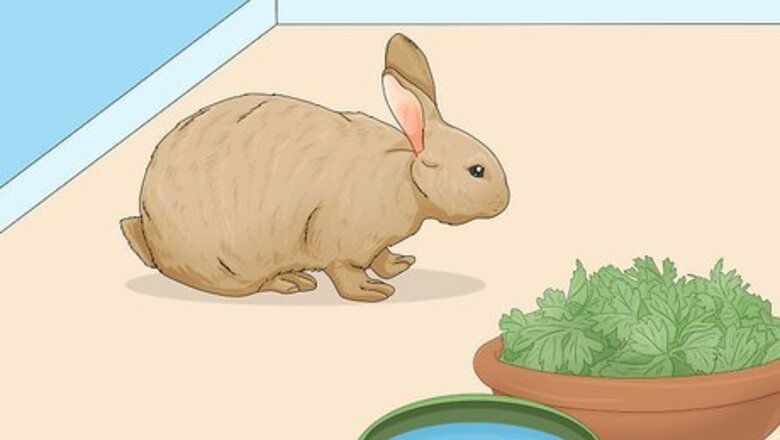
views
- Put your new bunny in a quiet space when you first bring it home and spend time with the rabbit so it slowly warms up to you.
- Feed your rabbit plenty of grass hay, along with plenty of leafy green veggies and ⅛ to ¼ cup of Timothy hay pellets.
- Keep your rabbit indoors in a large enclosure and/or bunny-proofed space, rather than leaving them outdoors.
Bringing the Rabbit Home
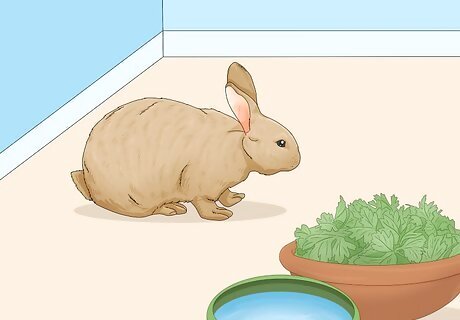
Set the rabbit in a quiet and secure spot when you bring them home. Make sure that the rabbit has a place to sleep and move around, as well as easy access to their food and water. Give your furry friend plenty of space as they get used to their new home, and avoid lifting them up for the first couple of days. Set up a small enclosure that your rabbit can comfortably hop around in without any risk of escaping.
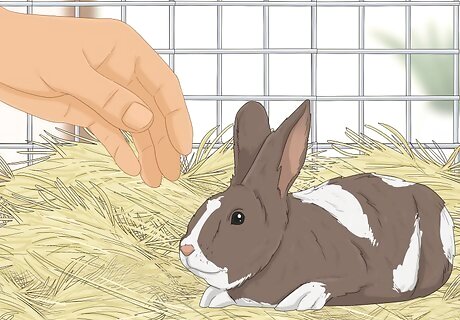
Sit near your rabbit so you can begin to bond with them. Let your rabbit hop around their enclosure and come over to you. Don’t try to pick them up at this point—just let your furry friend give you a good sniff before they go on their merry way. To encourage even more bonding, set out some treats next to you, like a small piece of parsley. Don’t be discouraged if it takes a little while for your rabbit to adjust and warm up to you.
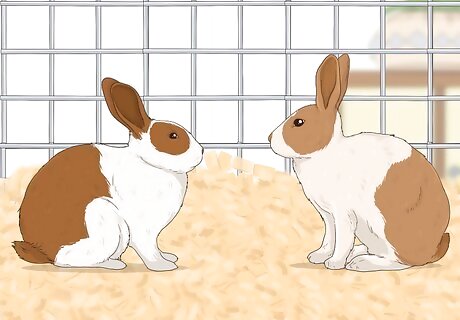
Monitor any pairs of rabbits you adopt together. Moving to a new home is stressful for any bunny, even if they’re making the journey with a rabbit they’ve known for a while. Keep a close eye on both bunnies to make sure that they’re not getting into fights. Dissolve fights by separating the rabbits and placing them in their own individual spaces.
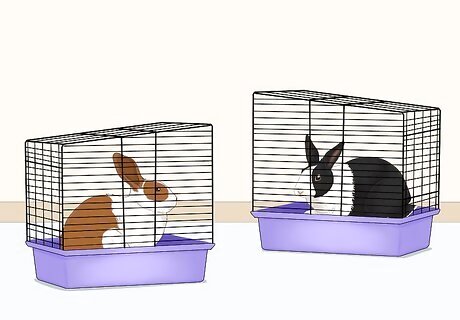
Introduce new rabbits to each other gradually. Start by switching your rabbits’ toys—this way, they can get used to each others’ scent. From there, keep the rabbits in separate areas but let them see one another. While they’re still separated, feed them so they can watch each other while they eat. At this point, find a “neutral” spot that neither rabbit is familiar with and let them meet there. Make sure that your rabbits are neutered before they meet.
Diet
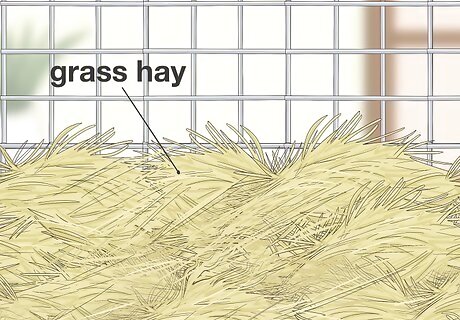
Give your rabbit unlimited grass hay. Grass hay is the main component of a rabbit’s diet, so it’s important for it to be available at all times—put it out on a daily basis in a clean area of the rabbit’s enclosure. Some great grass hays to consider include: Timothy hay Orchard hay Brome hay Exception: If you’re caring for a baby rabbit (less than 7-8 months old), give them alfalfa hay and alfalfa pellets, which are both great sources of calcium.
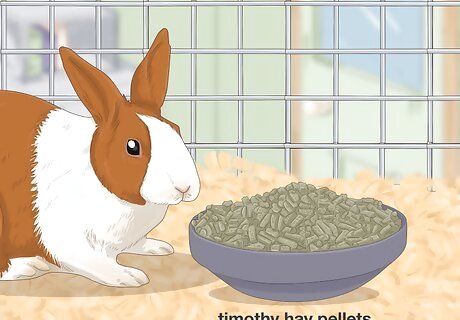
Offer rabbits a small portion of Timothy hay pellets. Give rabbits ⅛ to ¼ cup of Timothy pellets for every 5 lbs (2.25 kg) they weigh. Carefully measure out the hay pellets, making sure that you don’t give your bunny too much—otherwise, they might gain too much weight. Pellets can offer certain nutrients that aren’t always accessible in hay and produce.

Give your bunny plenty of leafy green veggies. Set aside plenty of leafy, low-carb veggies for your rabbit to snack on, like romaine lettuce, carrot tops, mustard greens, broccoli greens, beet greens, and bok choy. Non-leafy veggies like broccoli, endives, squash, green peppers, wheat grass, and radicchio are also good options. Steer clear of leafy greens like parsley, kale, Swiss chard, and escarole; since they have a lot of calcium, they could eventually give your bunny bladder stones. Iceberg lettuce also isn’t a great option, since it doesn’t offer much in the way of nutrients. Believe it or not, carrots aren’t super great for rabbits, since they have a lot of carbs and can mess with your bunny’s internal bacterial ecosystem.
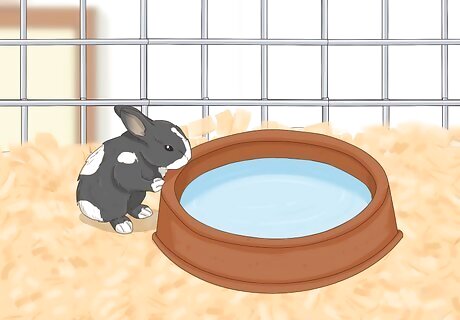
Supply plenty of clean water so your rabbit is always hydrated. Make sure that your rabbit always has access to fresh water that’s changed daily. If it’s pretty warm out, give them cool water; if the weather is pretty cold, give them warm water instead. Rabbits tend to consume water and food at a 2:1 or even 3:1 ratio, so giving them a good supply of water is essential. Water is essential to a rabbit’s health and well-being. If they lose even 10% of their body’s total water content, they could pass away.
Housing & Environment
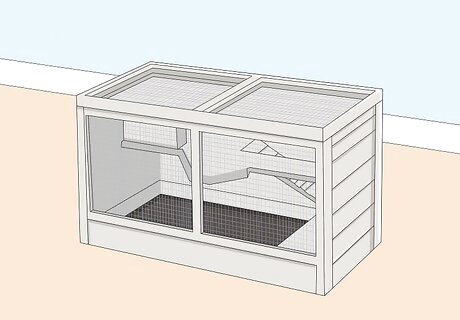
Provide an indoor resting space for your rabbit. Set up a large, enclosed shelter with a minimum of 2 sections/compartments—each one needs to be big enough for your bunny to hop around, stand up, and stretch out in (around 24 inches/60 cm tall and 59-71 inches/150-180 cm long is a good size for many rabbits). One compartment gives your rabbit a comfortable place to sleep, while the other gives them a place to chill out and eat their meals. Warning: Never keep your rabbit in a cage—they’re too small for your bunny to live comfortably.
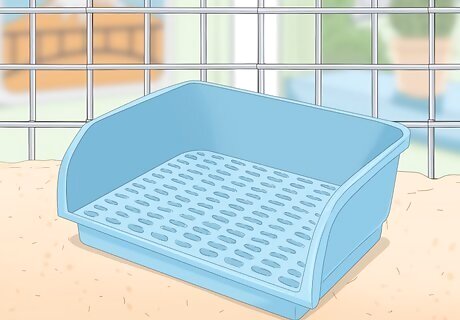
Set up a litter box for your bunny. Grab a plastic litter box tray (for cats) and fill it up with paper-based litter, or a rabbit-safe brand like Carefresh, Critter Country, Feline Pine, or [1]. Spread out a 1 in (2.5 cm) layer of this litter and then arrange a very large scoop of hay on top. Aim to clean and replace your rabbit’s litter box very frequently (once every 2-3 days at the absolute latest). Steer clear of generic cat litter, since many varieties aren’t safe for rabbits to eat (like clay or crystals).
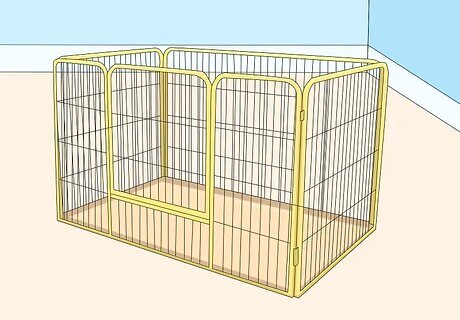
Create a bunny-proofed indoor enclosure where your bunny can run around. Set up a space that’s at least 8 sq ft (0.74 m) so your bunny has plenty of room to hop and run. A dog enclosure works really well for this. Just make sure it’s at least 3 ft (0.91 m) high, since rabbits can reach this height when they jump. If you have the space, dedicate a room entirely to your rabbit—just be sure to rabbit-proof it beforehand by: Adding a protective cover to cables Setting cleaning chemicals somewhere the rabbit can’t get to them Keeping out any other pets that could scare or hurt the rabbit (like a dog or cat) Taking out any poisonous plants Tip: If possible, give your pet “free range,” where you let them travel all around your home—just make sure that every room they can access is bunny-proofed. Many rabbit owners find free-roaming (or some combination of free-roaming) to be the gold standard for rabbit care.

Keep your rabbit in 60 to 75 °F (16 to 24 °C) conditions. Rabbits prefer mild temperatures that aren’t too hot or too cold. Whenever possible, check your home’s temperature to make sure that it falls somewhere within this range.
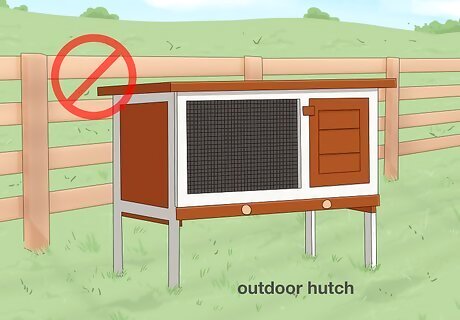
Never keep your rabbit in an outdoor hutch. Despite popular belief, an outdoor home simply isn’t suitable for a bunny, as there are many threats outside (predators, harsh weather, disease-carrying insects, etc.). Plus, most hutches don’t give rabbits enough room to comfortably run and play. Always keep your bunny indoors so they can stay safe and healthy.
Handling, Playtime & Grooming
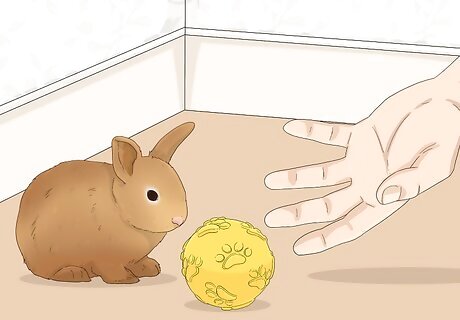
Give your rabbit plenty of toys to play with. From straw baskets and paper towel rolls to pieces of untreated wood and cardboard boxes, there are plenty of inexpensive options at your disposal when it comes to playing with your bunny. Here are a few items you might consider: Paper grocery bags Towels Hard baby toys (like plastic keys) Cylindrical cardboard boxes Black and white newspaper Parrot toys
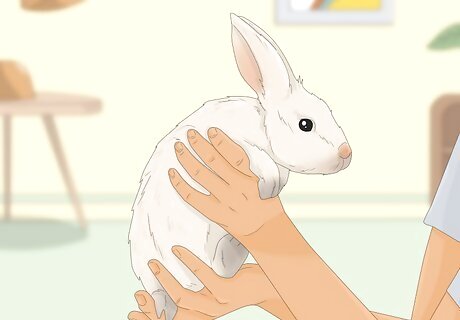
Support the rabbit whenever you pick them up. Slip one hand beneath the rabbit’s tummy, directly beneath their front arms. Then, use your opposite hand to lift and support the bunny’s rump. This way, their back is well-supported and they’re at less risk of injury. Never pick up a rabbit by the ears (or in any way where they aren’t fully supported).
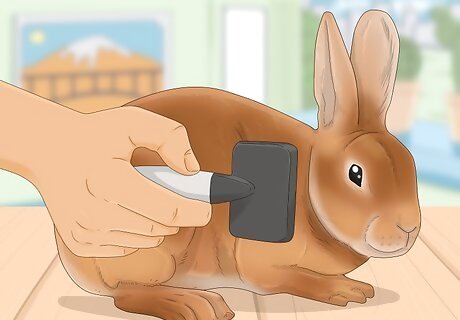
Brush your rabbit at least twice per week. Start by going over your rabbit’s fur with a bristle brush; then, brush over the fur with a rubber grooming tool. Your main goal is to get rid of any loose fur that your bunny might eat by mistake, which can cause GI problems. Some rabbits might need a more rigorous grooming routine, like an Angora rabbit. Your bunny may need more frequent brushings when they’re shedding heavily, too. Warning: Rabbits don’t typically need to be bathed; in fact, this process can do more harm than good due to the stress it causes, among other reasons.
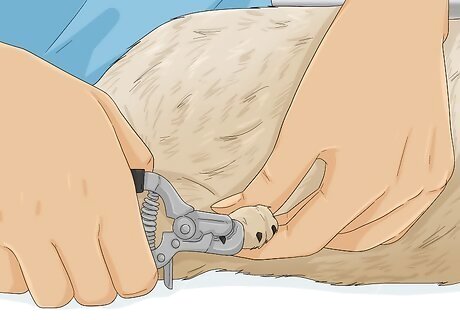
Trim your rabbit’s nails weekly or as needed with a nail clipper. Inspect your bunny’s nails on a weekly basis—if they’re looking a bit unruly, it’s time for a trim. Hold your rabbit in a feet-up position, or cuddle them in your arms so you can easily reach each paw. Snip the sliver of nail beneath the quick (the red, blood-filled portion of the nail); if the nail is too dark, inspect it with a flashlight first. Typically, rabbits can go without having their nails trimmed for 4-6 weeks.
Vet Visits
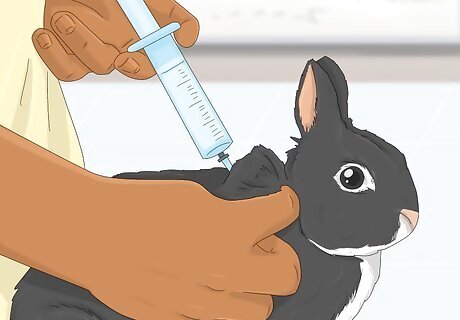
Bring your rabbit to the vet once a year. Rabbits need annual checkups to make sure they're healthy. During these check-ups, your vet will make sure that your bunny is up-to-date on all their necessary shots, and that they’re feeling happy and healthy.
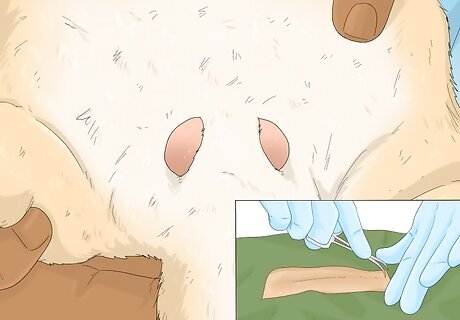
Get your rabbit spayed or neutered if they aren’t already fixed. As rabbits get older, they’re more likely to contract illnesses like uterine cancer. Spaying, a process where the rabbit’s reproductive organs are removed, helps prevent this. It also makes sense that spayed rabbits tend to live a little longer, with a total lifespan of 8 to 10 years.
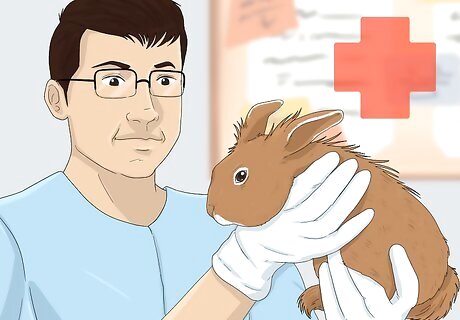
Take your rabbit to the vet if they seem sick. Pay attention to your rabbit’s daily behaviors and mannerisms. Do they seem to behave normally, or does something seem off? Here are a few symptoms to be on the lookout for: Not eating for 8 to 12 hours Runny eyes or nose Low energy levels Hunched posture Audible tooth grinding
















Comments
0 comment